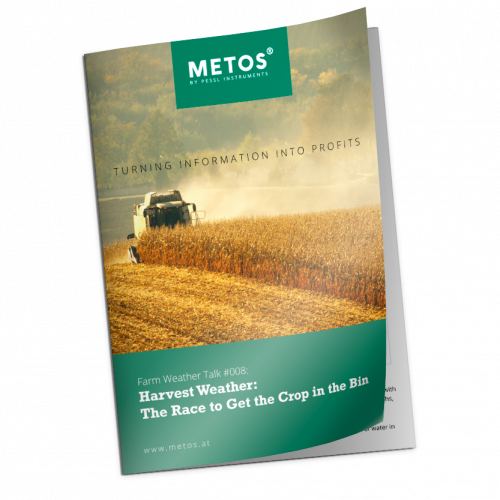A new blog in the Farm Weather Talk series by Guy Ash, METOS® Global Training Manager.
Harvest Weather – The Race to Get the Crop in the Bin
All growing season long, farmers are worried about the weather, and for most of the year, rain is a welcomed sight. At harvest time, they wish for Mother Nature’s tap to shut off and the conditions to be dry and warm. So, how do you know what to expect?
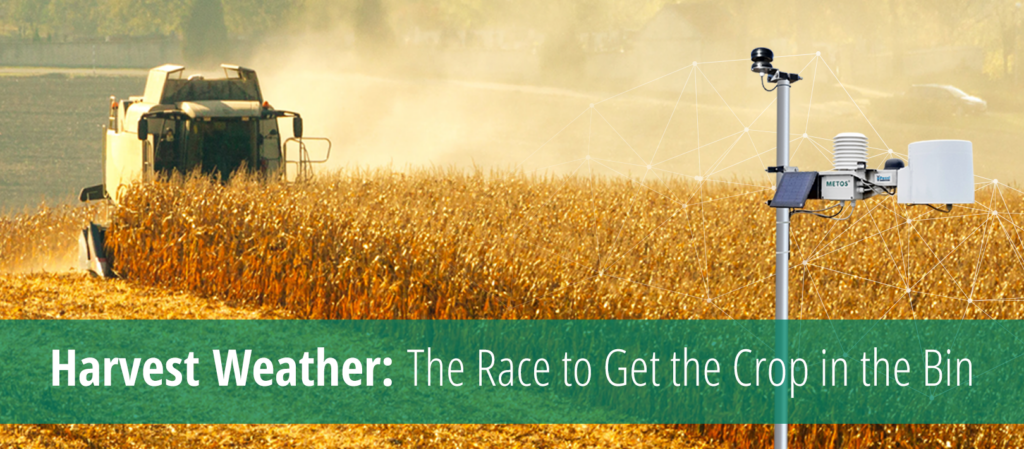
As we have talked about in previous Farm Weather Talks, the importance of a field weather station with a site-specific forecast is like peanut butter and jelly – they are inseparable! Let’s dig into this to see how they can be used today.
In the northern growing areas of the northern hemisphere, the length of daylight begins to shorten in August as cooler temperatures and higher dew values begin to creep in. By early September, the length of drying time can fluctuate widely, impacting drying and harvest conditions.
With today’s IoT (Internet of Things) solutions for field monitoring, understanding harvest conditions is easier than ever, as a weather device can monitor the field’s real-time conditions and provide a field specific hourly forecast for the next several days.
A grower or agronomist no longer must use weather information that is from their field and updated only once an hour. Today’s weather information and forecast are further integrated into actionable tools for: work planning (Harvest Window) and alerting, which accessible on desktop and mobile devices.
As we all know, precipitation, temperature, and relative humidity can vary over a geographic area and be impacted by local topography and to water bodies. Today however, there are many tools available for a grower or agronomist, from looking at field level real-time conditions to precipitation, temperature, and relative humidity over a geographic area, which help address these concerns.
A tool for understanding the general geographic variation of precipitation, temperature, and relative humidity is MeteoBlue’s site for mapped weather parameters. You can select hourly values and click the map for pinpoint values. This allows us to see what we can expect over the short term, or click the animation tool to see the change in values for each hour over the next 7 days.
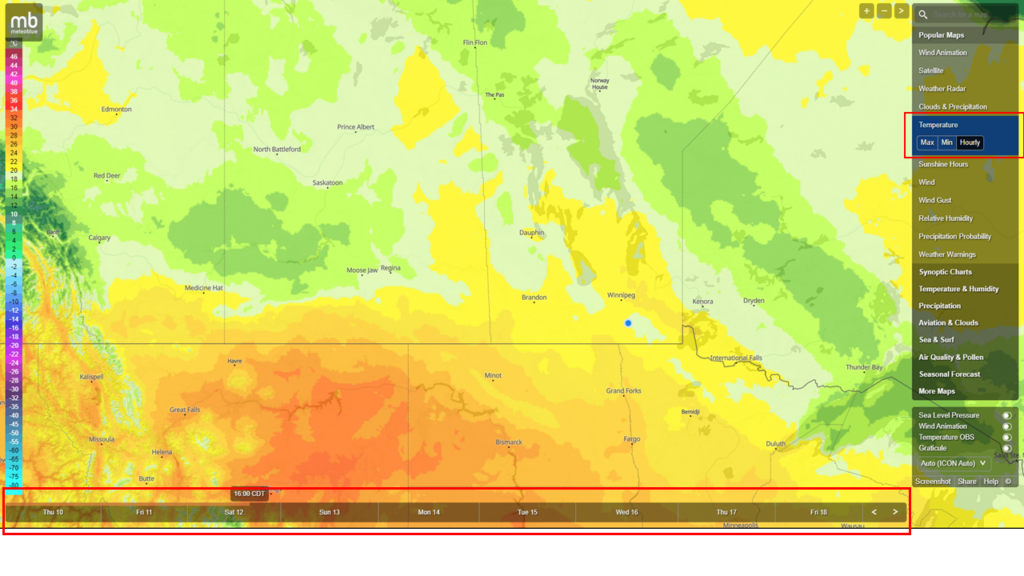
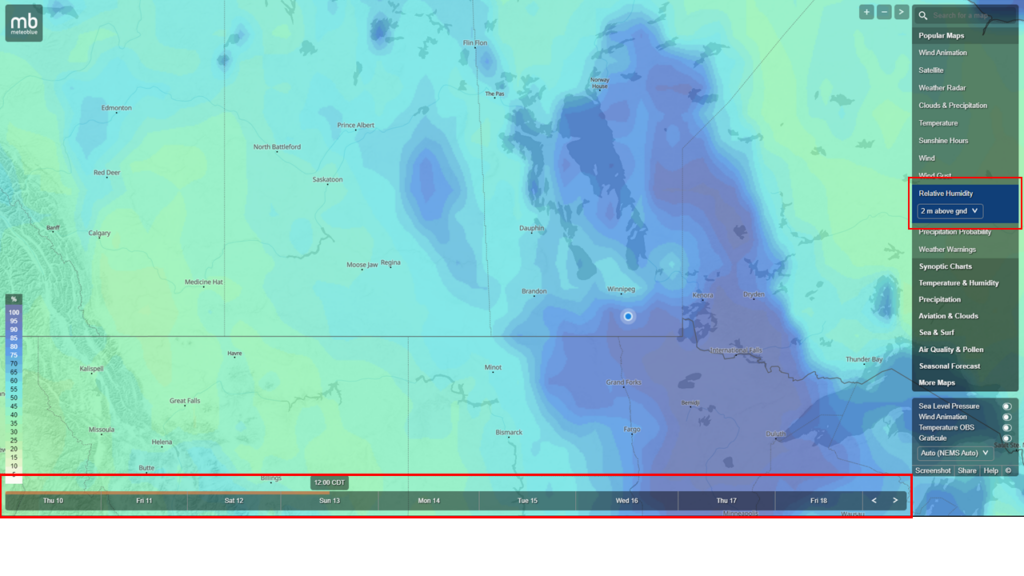
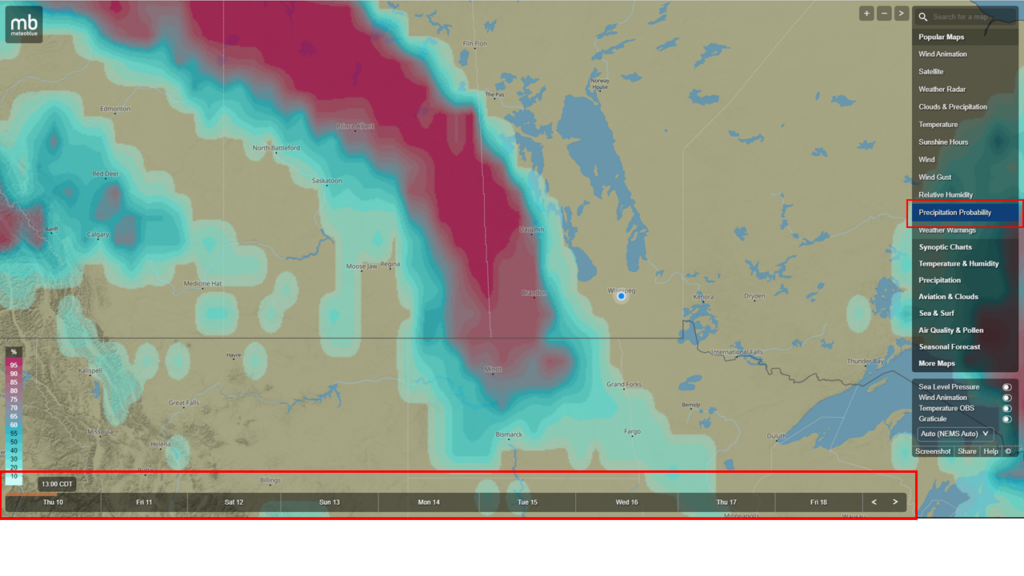
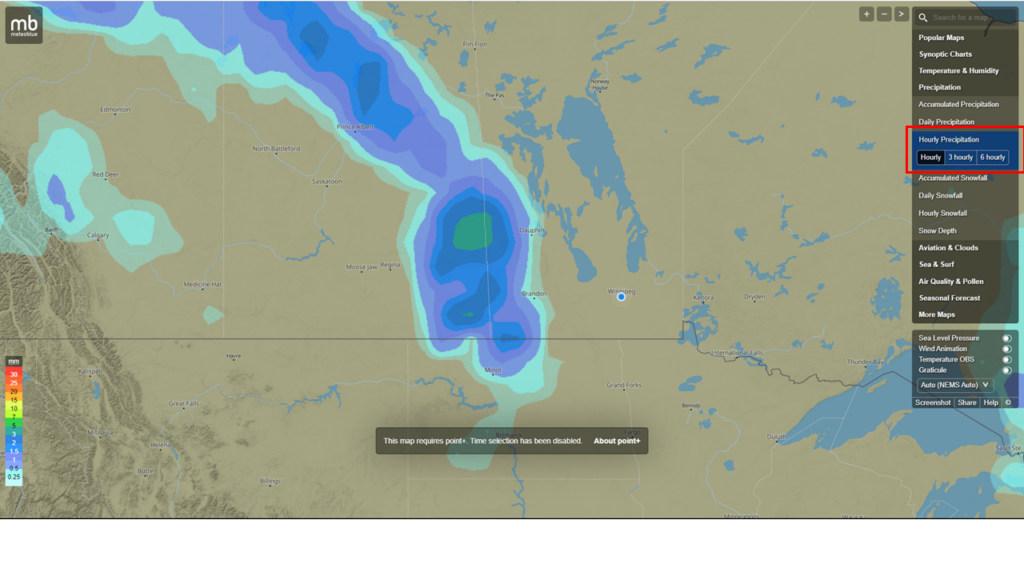
A user can further drill down by having a site-specific weather station at the field that updates in near real-time. This will provide up to the minute detailed precipitation, temperature, relative humidity, and leaf wetness information, which are extremely important in making decisions for harvest. Depending on the cellular communication, this can provide 10-minute updates on field conditions.
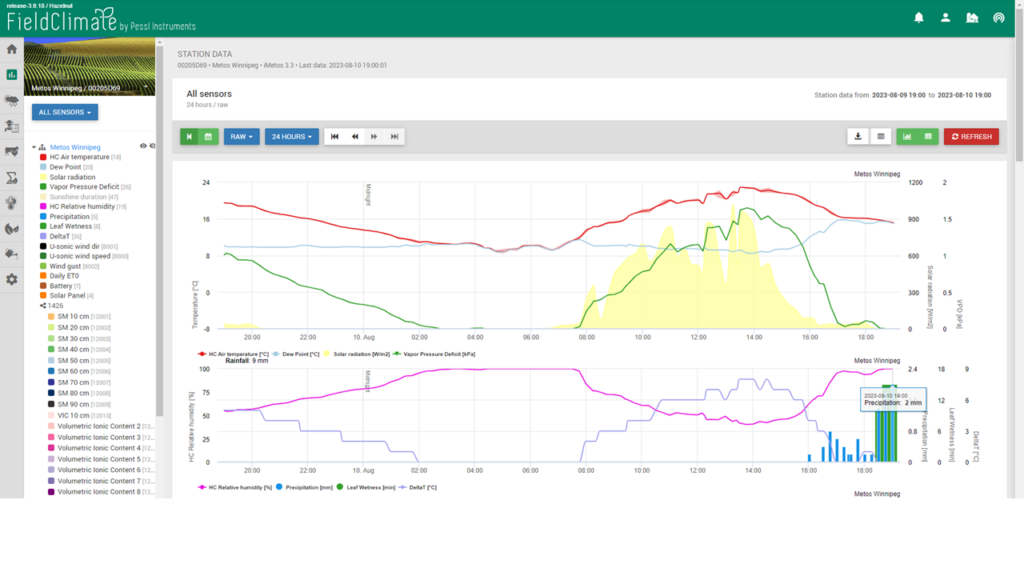
With in-field stations, site-specific hourly updated forecasts can be generated for that exact location. In this case, the station’s sensors contribute to nudging and tuning the forecast, and the AI in the forecast learns the weather at that location over a couple months period, further fine-tuning the forecast for the actual field location. This creates very accurate forecasts for the field, which are used to pinpoint acceptable periods for harvest operations.

Notification of field-level conditions can be delivered via SMS or web notifications. Both methods are delivered to a mobile phone for notifications while a customer is on the go. The difference between the two methods is that SMS delivery can potentially incur an extra cost depending on your phone plan, while web notifications are available through your current phone plan. The interesting point with IoT weather stations is that they are smart devices that can send SMS alerts to users directly based on stored phone numbers that are setup on the desktop.
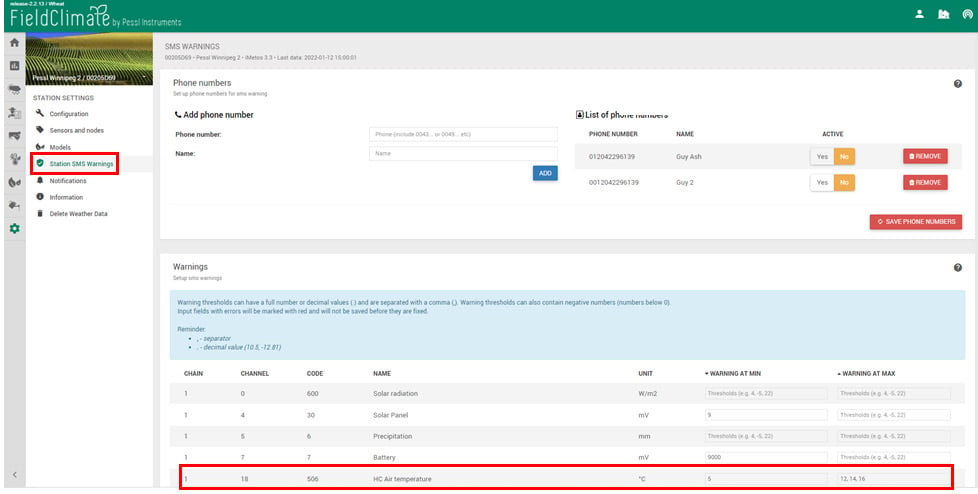
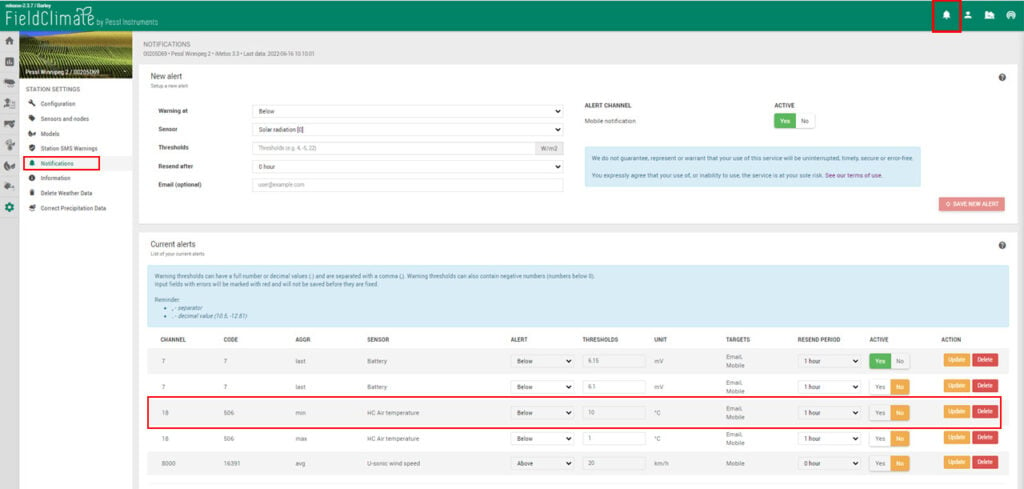
What do all these tools mean?
They allow a grower or agronomist to have more exacting information on the current and future conditions for harvesting at the actual field. This allows the user to adjust the harvest schedule for the time of day when conditions are optimal for harvest
and helps to minimize degrading factors affecting quality.
Actionable Tools
So far, we have looked at weather variables and forecast conditions that are important for harvesting, but these can be combined to provide a very accurate and easy-to-use toolset for decision-making.
The toolset creates a unique value proposition:
- Know before you go to the field – save time and money.
- Verify field weather conditions.
- Verify forecast conditions.
- Verify site-specific real-time, and forecast windows for harvest.
- Record of past harvest conditions.
How does it work?
The field station provides site-specific weather information for current harvest conditions (with alerting) and is also integrated into the field-specific forecast, which is further integrated into the Harvest Window tool.
Value Proposition
Like any other science and technology, there are many improved options for having better information and tools for harvest decisions.
As we know, poor harvest conditions can lead to several degrading factors, such as high moisture content, sprouting, mildew, frost damage, etc., so harvesting under the best possible conditions can help minimize these degrading factors.
- Know before you go – save time and money. • Verify field weather conditions.
- Verify site-specific forecast conditions.
- Verify site-specific real-time, and harvest windows.
- Record of past harvest conditions.
Want to learn more?
Download the Harvest Weather – The Race to Get the Crop in the Bin leaflet.
